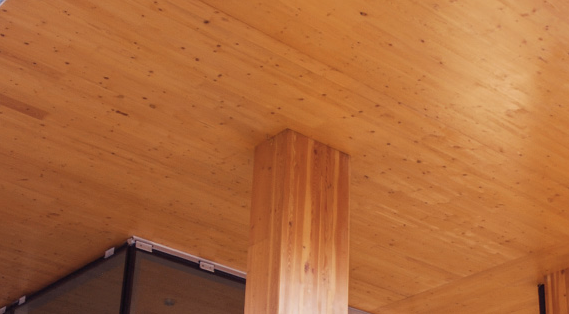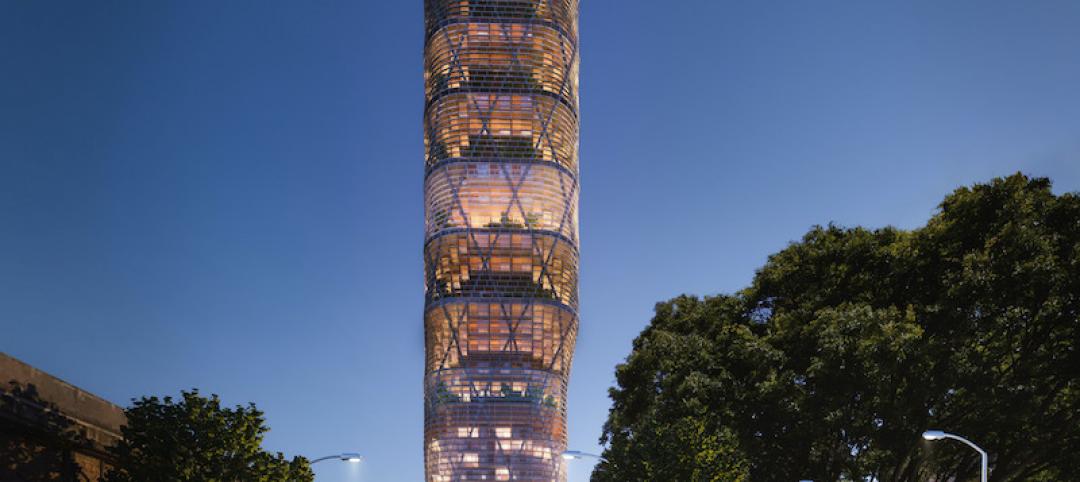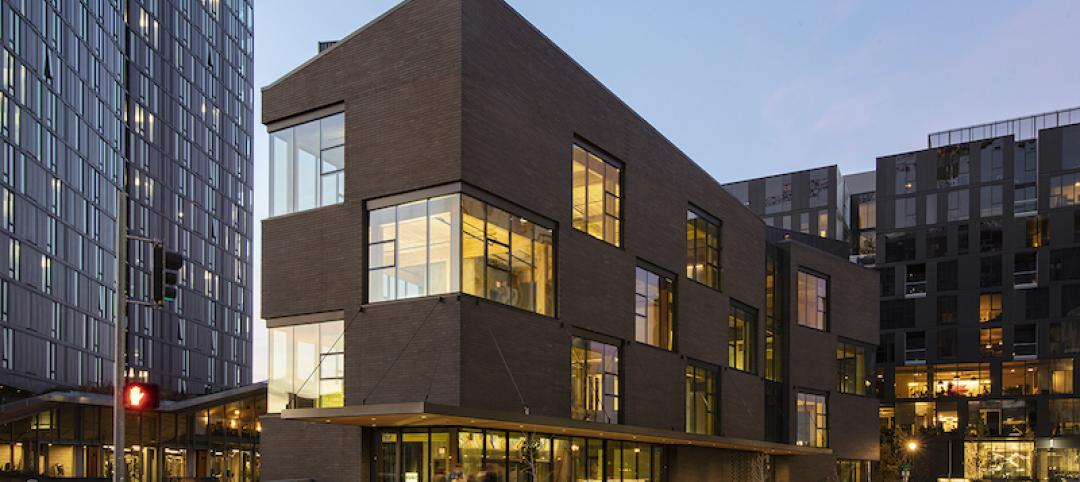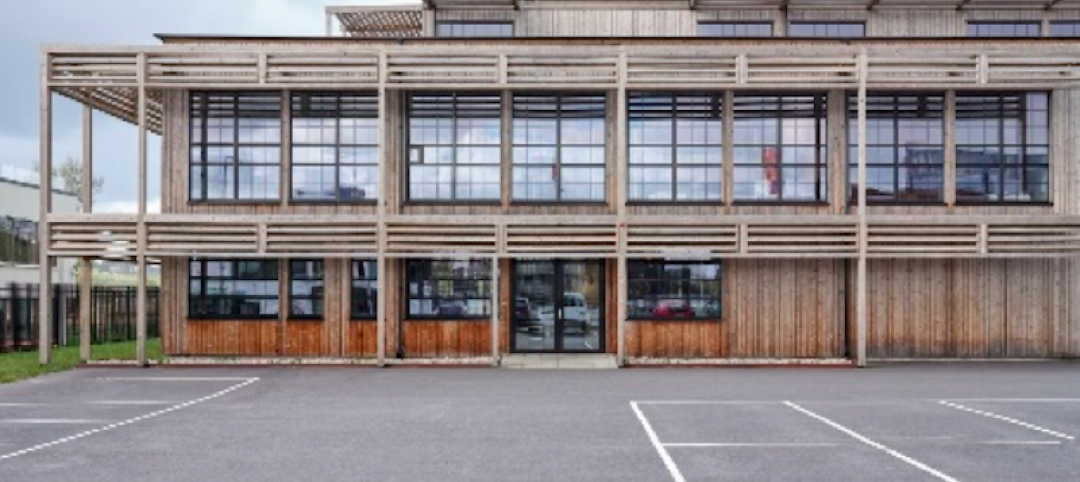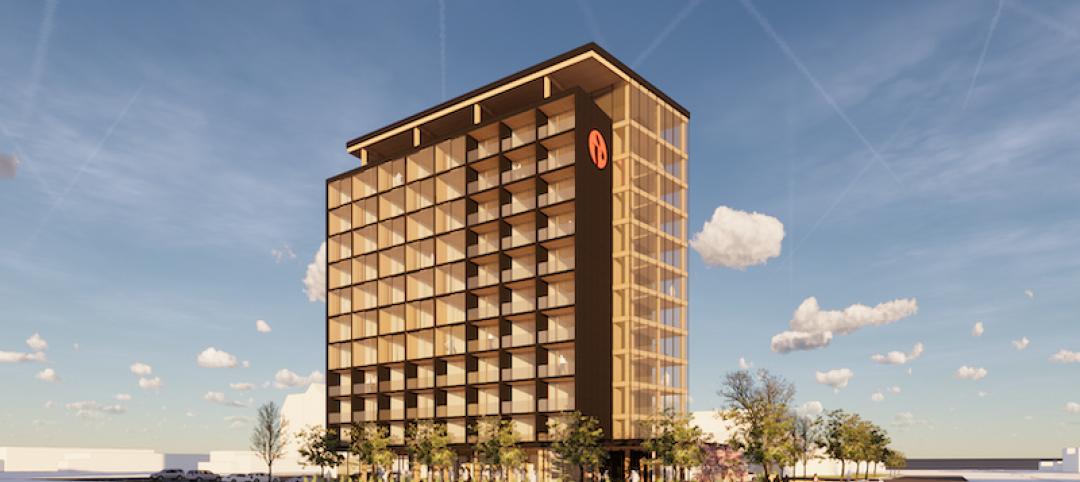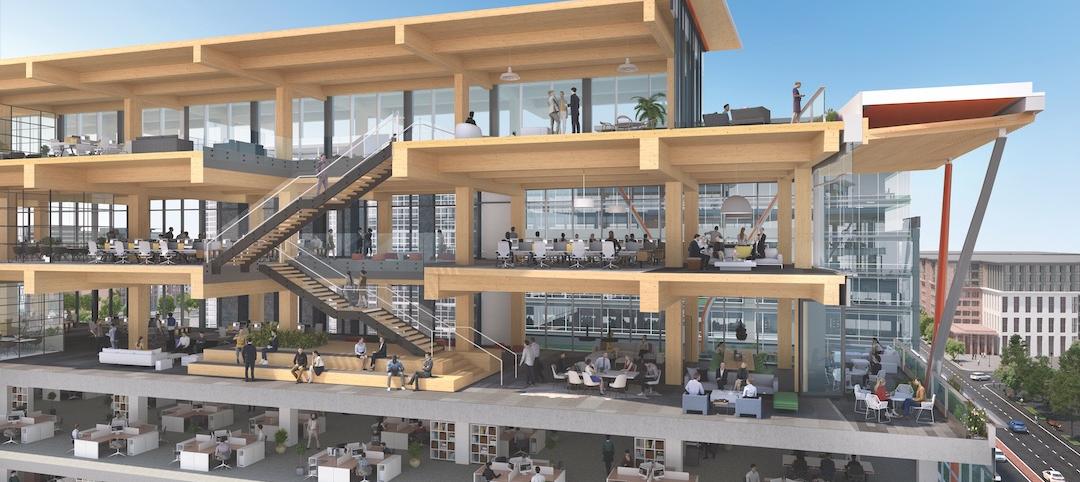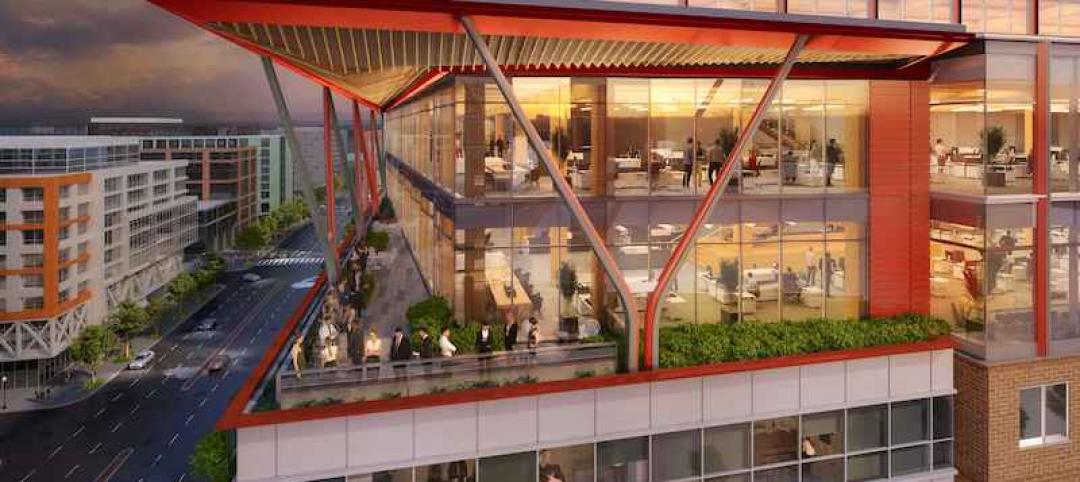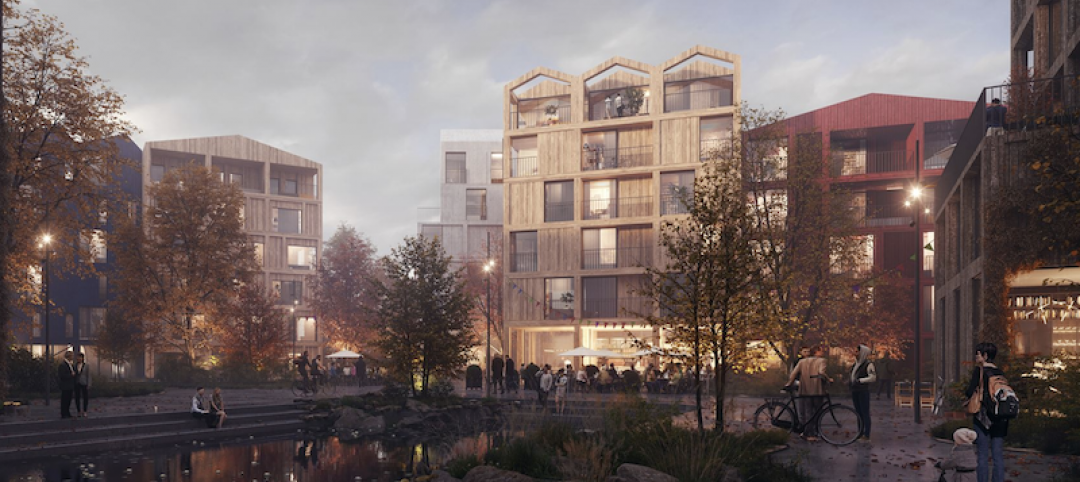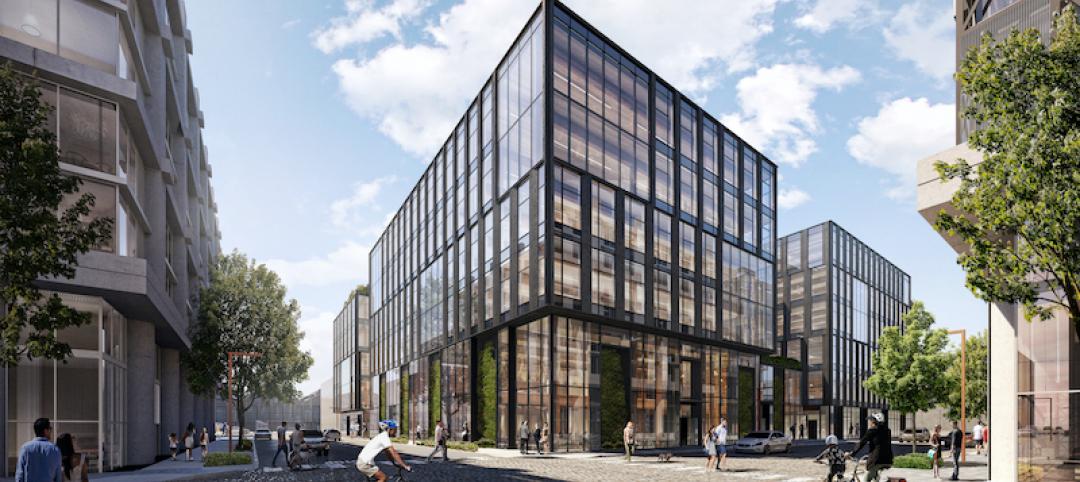Judging by the outcome of the International Code Council (ICC) Group A Committee Action Hearing, April 15-23, in Columbus, Ohio, it’s likely that we will be seeing more and taller mass timber buildings across the country very soon. At that hearing, 14 code proposals related to new and taller types of mass timber construction were recommended for approval by the broader ICC membership this fall.
The ICC’s move is historic. Though mass timber construction isn’t new to the building code community, having already been included in the International Building Code (IBC) as Type IV-Heavy Timber, the trend toward considerably taller wood buildings was so clear that the ICC moved in 2015 to keep the IBC relevant in the marketplace by updating the code.
Successful mass timber buildings of up to 18 stories have already been approved by local officials in the United Kingdom, Norway, and Canada. In the United States, at least 35 tall mass timber buildings, ranging from 7 to 24 stories, are pending approval in 21 different jurisdictions.
At the heart of the Committee’s proposals are three new kinds of Type IV mass timber construction, offering design options well beyond the current limits for heavy timber under the code.
With the market clearly responding to mass timber, the obvious question was: Will the model code be prepared? By appointing the “Ad Hoc Committee on Tall Wood Buildings” from the code official, fire service, regulatory, engineering, architectural and building materials communities, the ICC launched a two-year process to assess the science of mass timber, to field additional research, and to propose any code changes necessary to ensure the strength and safety of tall mass timber buildings.
At the heart of the Committee’s proposals are three new kinds of Type IV mass timber construction, offering design options well beyond the current limits for heavy timber under the code.
When passed by the ICC membership, the updated IBC will define Type IV-A, Type IV-B and Type IV-C “Mass Timber” construction with heights ranging to a maximum of 18 stories. Importantly, each new type of construction has hourly fire resistance ratings more robust than concrete/steel buildings of comparable heights and area.
Type IV-A, from 1 to 18 stories, requires non-combustible protection on all mass timber elements. Type IV-B, from 1 to 12 stories, permits limited exposure of mass timber elements when spaced adequately. Type IV-C. from 1 to 9 stories, permits exposed mass timber elements like what’s permitted under Type IV Heavy Timber in the current code. Type IV-C also keeps the current code’s Heavy Timber height limit.
All new Type IV requirements prohibit combustible material on exterior walls and require non-combustible protection for all concealed spaces, shafts and exit enclosures. Dual water supplies are also required for fire sprinklers on mass timber buildings over 120 feet, usually 8-12 stories.
It’s not surprising that the Committee proposals focused on providing reassurance that tall mass timber buildings meet or exceed the standards in the fire code. The inherent fire resistance of mass timber, where charring in a fire event creates a barrier that protects the inner wood structure, has long been understood. Indeed, testing by Underwriters Laboratory, Southwest Research Institute and the National Research Council of Canada has clearly demonstrated how charring of mass timber elements offers a reliable and predictable measure of fire performance.
But building taller required another look. Testing of full-scale mass timber structures in 2017 at the U.S. Government’s ATF Fire Research Laboratory helped establish the code requirements. Conducted without intervention by fire sprinklers, Type IV-A (fully protected) self-extinguished after 3 hours with no significant charring. Type IV-B (partially protected) concluded at 4 hours when it self-extinguished. Type IV-C (fully exposed) also self-extinguished at 4 hours.
The ICC code changes supported by this testing will usher in a new era in the construction of buildings in the low to mid-rise market. New options abound. Already, significant investment in the production of cross laminated timber (CLT) panels, the most popular mass timber application, has made tall mass timber buildings of up to 18 stories a cost-effective option for builders. Operating under the same ANSI quality standards, the supply chain is continuing to expand. With this growth, the market is already seeing lower costs and new products.
While widespread use of mass timber is good news for the economies in timber producing regions of the country, it also promises some distinctive benefits for builders, communities and the environment.
Builders, pressured by persistent labor shortages, are finding a wider pool or workers able to safely install mass timber panels. They also report significant labor savings and more efficient and safe job sites. Construction times are reduced by “just-in-time” delivery to job sites and quick installation of panels.
Of course, communities experience less noise and dislocation during construction and, by avoiding the usual stockpile of dimension lumber on site, fire risks are reduced. The positive environmental attributes of mass timber buildings, include a low energy intensity during manufacturing, superior energy efficiency in mass timber structures, and better management of a renewable resource.
However, it remains to be seen how the emergence of tall mass timber buildings will impact the built environment. Certainly, the buildings already completed have been well received. Many builders, architects, and engineers are optimistic. They note that favorable strength-to-weight ratios in mass timber opens new options.
How that future unfolds is unclear. But there can be little doubt that the emergence of tall mass timber buildings represents a paradigm shift for the construction community.
Related Stories
Office Buildings | Jul 9, 2020
Sydney will be home to the world’s tallest hybrid timber tower
SHoP Architects, in collaboration with BVN, is designing the project.
Building Materials | Jul 5, 2020
A new report predicts significant demand growth for mass timber components
There should be plenty of wood, but production capacity needs to catch up.
Wood | Jun 24, 2020
One of Europe’s largest office and warehouse buildings is made entirely of wood
Exli designed and built the project.
Wood | Apr 1, 2020
HDR will design a mass timber Ramada Hotel
The hotel will be located in Kelowna, British Columbia.
Wood | Feb 3, 2020
Mass timber construction grows up
Mass timber is finally making a dent in commercial construction. But can it keep up with demand?
Wood | Jan 24, 2020
105,000-sf vertical mass timber expansion will cap D.C.’s 80 M Street
Hickok Cole is designing the project.
Urban Planning | Jan 13, 2020
Henning Larsen designs all-timber neighborhood for Copenhagen
The project hopes to set a standard for how modern communities can live in harmony with nature.
75 Top Building Products | Dec 12, 2019
Top Building Envelope Products for 2019
Sto's beetle-inspired exterior coating and Dörken Systems' UV-resistant vapor-permeable barrier are among the 28 new building envelope products to make Building Design+Construction's 2019 101 Top Products report.
Wood | Dec 11, 2019
Design plans submitted to San Francisco for the largest mass timber office building in North America
Suppliers of engineered wood products are suddenly scrambling to keep up with demand.


